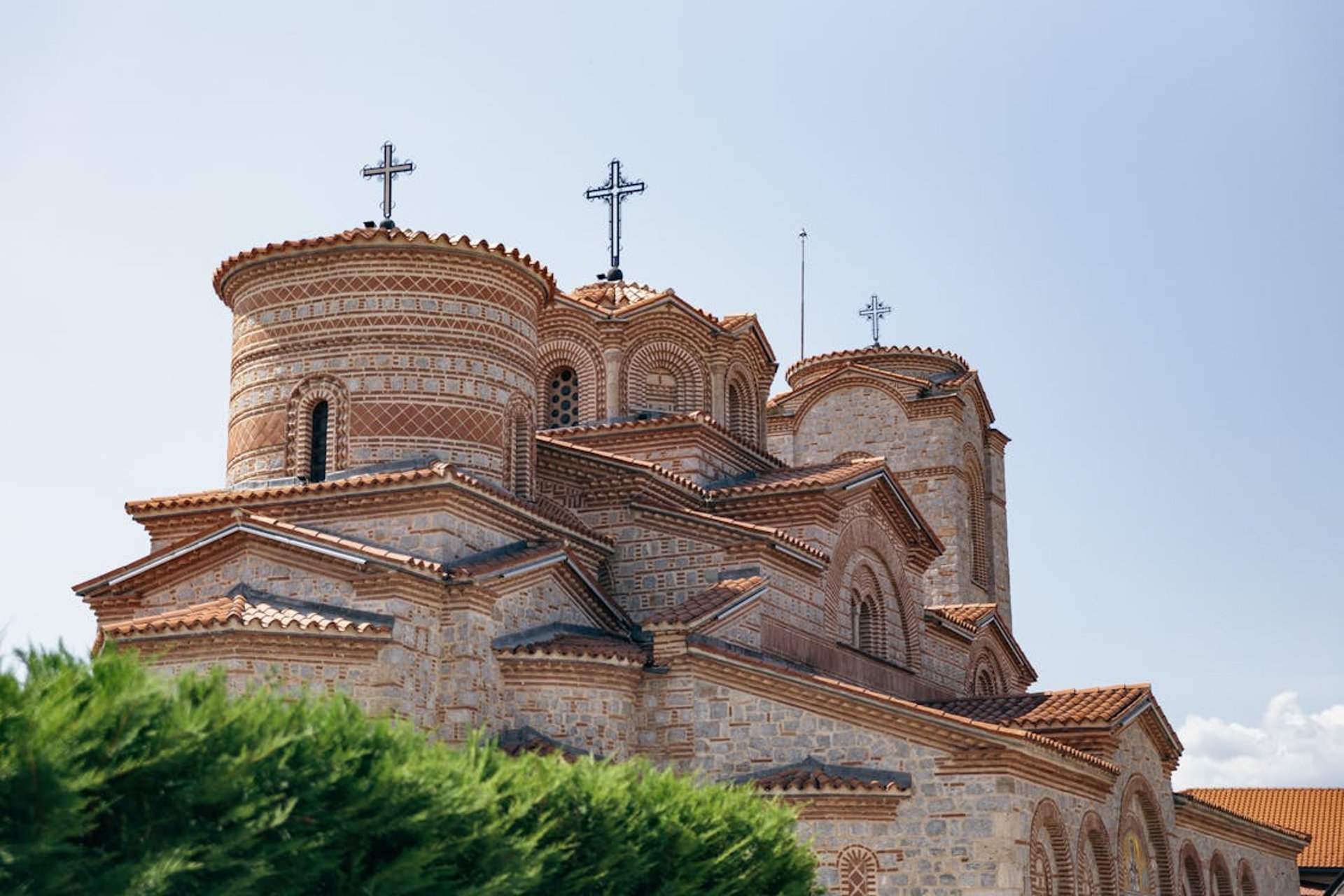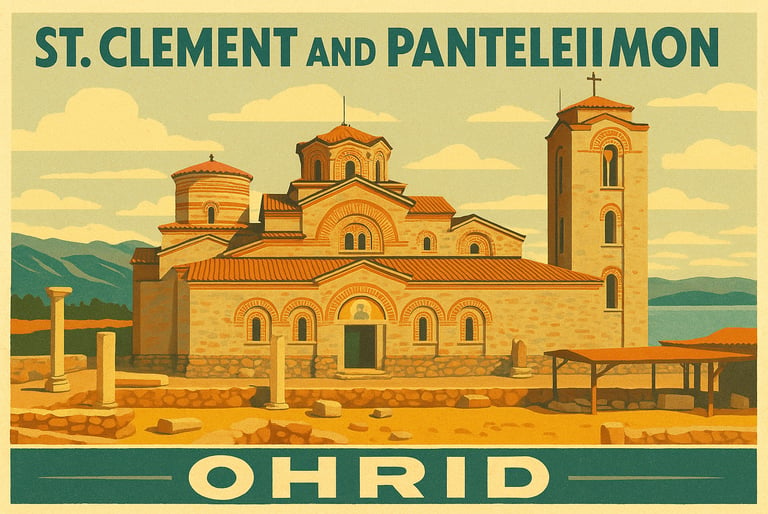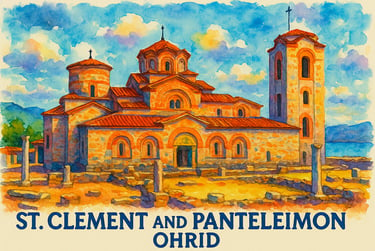
The Church of St. Clement and Panteleimon is one of the most significant landmarks in Ohrid, Macedonia. It was originally built by St. Clement of Ohrid in the 9th century as a center for education and religious life. St. Clement used the church as a place to teach his disciples and as a burial site for himself. The church was destroyed and rebuilt several times over the centuries, including during the Ottoman period. Today’s structure is a modern reconstruction, completed in the 21st century, based on archaeological evidence and historical records. The church’s interior features beautiful frescoes and a small museum with artifacts from early Christian times. It stands on Plaošnik Hill, offering stunning views of Lake Ohrid and symbolizing the region’s deep cultural and spiritual heritage.
St. Clement of Ohrid is credited with being one of the most important disciples of Saints Cyril and Methodius, helping to spread Christianity and literacy in the Slavic world.
The church was originally built in the 9th century and served as both a place of worship and a school, where St. Clement taught his students the Glagolitic and later the Cyrillic scripts.
St. Clement himself is said to have designed and built the church, making him one of the earliest known Slavic church builders.
He is considered the patron saint of education and the first bishop of the Slavic peoples, earning him the nickname "Enlightener of the Slavs."
After the Ottoman conquest, the original church was converted into a mosque, and it remained that way for centuries.
The modern reconstruction of the church was completed in 2002, based on archaeological excavations that uncovered the original foundations.
St. Clement’s relics were discovered during these excavations and are now enshrined in the rebuilt church.
The site of the church, Plaošnik, is also believed to be the location of the first Slavic university, where thousands of students were educated.
Local legend says that St. Clement personally dug his own grave beneath the church, fulfilling his wish to be buried in the church he built.
The church today is a popular pilgrimage site, attracting visitors who admire its architecture, frescoes, and historical significance.






